Total war: How Ukraine mobilised a country as Russia overreached
Despite perceptions of Russia’s military strength, Ukraine has been able to slow the Russian advance. We examine how.
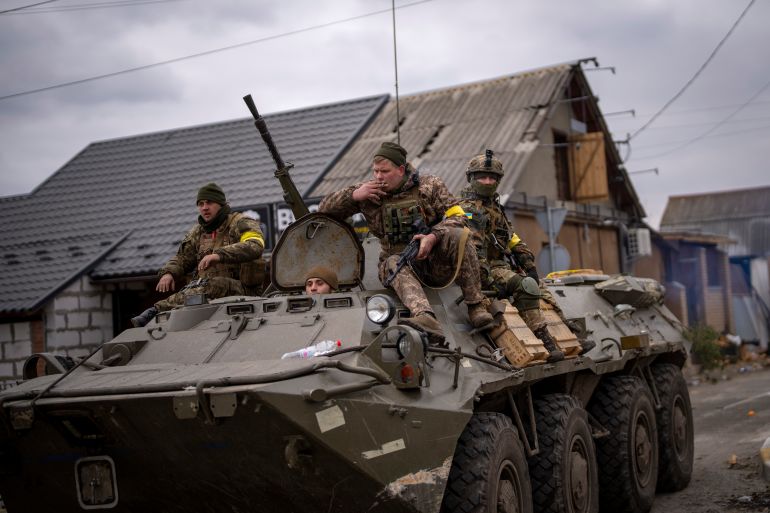
The war in Ukraine has highlighted two things to Russia and the outside world: that Russia’s much-vaunted military revolution has been exaggerated and that Ukraine’s resistance to the invasion is total.
Russia’s military capabilities have been built up in Western eyes, particularly after its modernisation programme in the wake of the 2008 Georgian conflict. New equipment was ordered and training focused on realism as Russia’s armed forces were put on a more professional footing. A new doctrine, designed to give the military greater flexibility in responding to a variety of scenarios, was also developed.
Keep reading
list of 4 itemsUS to provide Patriot missiles to Ukraine as part of $6bn defence aid
Qatar pledges $3m to Ukrainian human rights body
Ukraine agriculture minister released on bail in $7m corruption case
Russia’s new “hybrid” military tactics were highlighted by the relatively bloodless takeover of the Crimean peninsula in 2014, when “grey” operations – those below the threshold of actual conflict – were seen. Russian soldiers gradually infiltrated the region without firing a shot, their mere presence achieving Russia’s strategic aim of taking Crimea.
Since then, Russia’s military has been running increasingly sophisticated annual large-scale exercises and has had months to build up its forces on the border of Ukraine, amassing supplies, fuel and ammunition for an invasion that few on the ground in Ukraine and in the breakaway republics of Donetsk and Luhansk believed would actually happen.
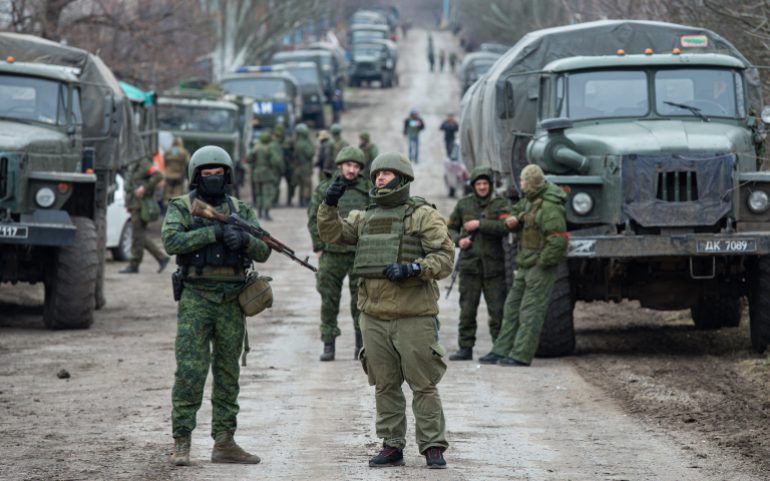
At most, a Russian military operation to partially seize the two breakaway republics was predicted, but when Russia finally invaded it went way beyond this – driving past Donetsk and Luhansk and advancing from multiple fronts right into the heart of the country.
And then it got stuck.
Russian military vehicles quickly ran out of fuel and soldiers ran out of food despite food and fuel stockpiles being nearby on the other side of the border.
Meanwhile, the hundreds of missile attacks and air strikes on Ukrainian bases and command and control centres, carried out on the first day, failed to achieve their aim of destroying Ukrainian military resistance.
Where is Russia’s air force?
These opening attacks saw Ukrainian airbases targeted but not destroyed; the Russian strikes lacked the intensity needed to stop the Ukrainian air force in its tracks.
Despite having an air force many times the size of Ukraine’s, Russia was unable to dominate the skies in the way necessary to protect the smooth and speedy advance of its mechanised columns of armour on the ground. These units now faced Ukrainian air strikes as they pushed deeper into the country.
This lack of coordination between Russian air and ground units left gaps in the defensive shield around advancing Russian armour, also allowing Ukrainian ground forces to successfully attack Russian armed helicopters, destroying many and depriving Russian army units of their protection and support.
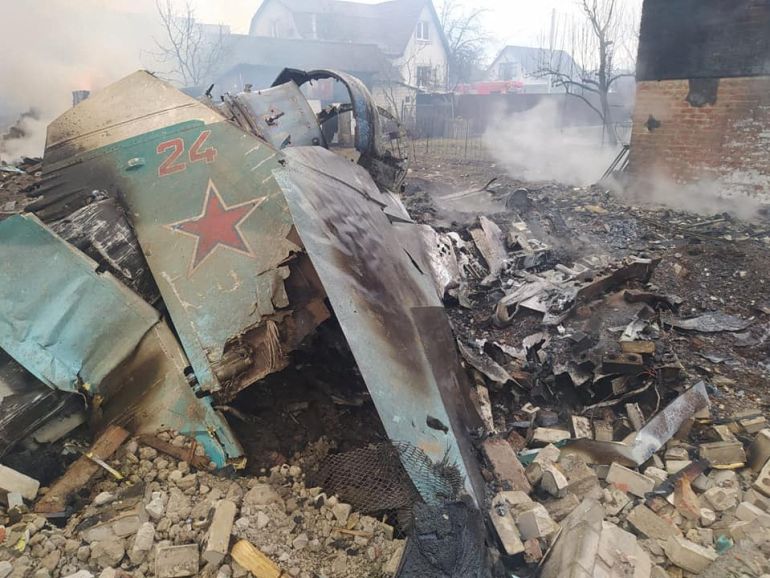
Ukrainian air defence units successfully downed several Russian jets, further discouraging the Russian air force from flying too many sorties and dominating the target airspace, a vital objective in any conflict.
Ukrainian jets were able to fly combat missions, often flying low over towns and cities as a morale boost to the population. Despite initial losses, Ukrainian jets are still a serious challenge to Russia’s air force.
However, a deal to supply the country with Soviet legacy aircraft from its neighbours has fallen through and Ukraine is in desperate need of replacement jets if it is to prevent Russia from eventually dominating the skies over the battlefield. It may have to rely on its armed drones if it is to stop Russia.
Ukraine’s drones
Ukraine has made effective use of its meagre complement of armed UAVs or Unmanned Aerial Vehicles. Its Turkish-made TB2 armed UAVs have been flying combat missions, not only carrying out air strikes on Russian vehicles and command posts but conducting intelligence, surveillance and reconnaissance (ISR) missions.
They act as real-time spotters for Ukraine’s long-range artillery, allowing the Ukrainian military to destroy columns of armour, supply trucks and troop concentrations before they even reach the battlefield, blunting Russia’s advance.
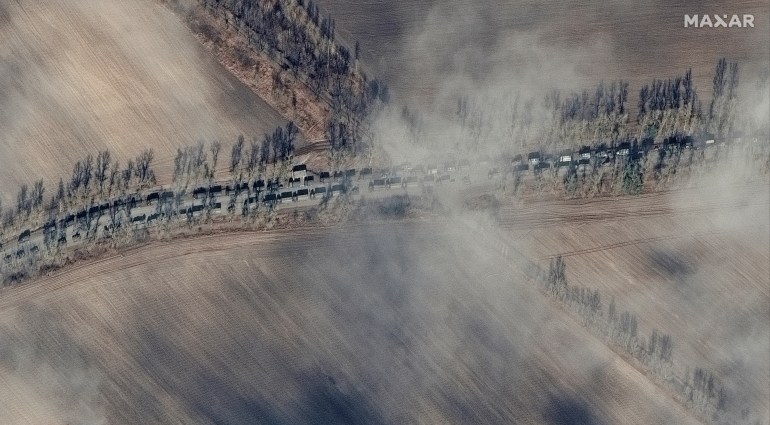
In the last week, more TB2s have been delivered to Ukraine from Turkey as part of a larger assistance package. This helps offset Ukraine’s smaller air force as the TB2 drones prove their worth.
Ukraine’s domestically made armed drone, The Punisher, while only armed with a small bomb, is very hard to detect and has inflicted damage on Russian air defence systems and radar that are vulnerable and easily knocked out of commission.
Russia, on the other hand, has been slow to develop its own armed UAVs and has only just started to deploy them in combat. This lack of ability to determine an opponent’s movements combined with a drone’s offensive capabilities has Russia at a real disadvantage as the Ukrainian military has had a far clearer picture of Russian objectives and tactics.
Morale
The tepid advance of Russian forces has been linked to poor leadership, lack of supplies and the low morale of Russian soldiers. Initial reports from captured personnel showed that many of them had been told that they were only being deployed on exercises, not to an active war zone.
There has also been a lack of understanding among the rank and file of the Russian military about why they are fighting this war, particularly as Russia and Ukraine have always been culturally linked.
Despite this initial reticence among some of the Russian soldiers to fight their neighbour, Russia has an estimated 150,000 troops in Ukraine, and many of them are highly motivated, well trained and well equipped. And while they may not have known where they were going at the beginning of the conflict, they certainly know now.
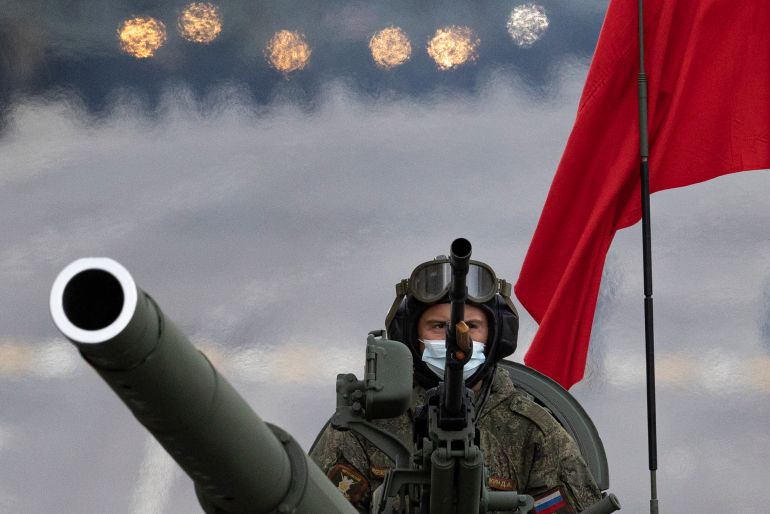
A drawn-out conflict will in some ways favour Russia as it uses these units to eventually wear down the Ukrainian military. Ukraine’s army of 126,000 at the start of the conflict was not small – it is, for example, larger than France’s – but Russia’s army is vast, comprising 280,000 soldiers with a further 50,000 airborne troops. Russia also has extensive experience of urban combat, formed in the Chechen capital Grozny and northern Syria, which will stand it in good stead in what is swiftly turning into a war for Ukraine’s major cities.
Nevertheless, a nimble Ukrainian opposition is consistently inflicting heavy losses on a slow-moving Russian military that has had its reputation tarnished by its ineptitude. There is a distinct possibility that Russia will become increasingly heavy-handed in its attempts to capture Ukrainian population centres as Ukraine’s united resolve to defend its land results in Russian casualties and reverses on the battlefield.
Total war
Ukraine’s response to the invasion has been nothing short of total. The entire country has been mobilised. Many have fled, but many more remain and are contributing to the fight.
Volunteer units dig trenches, and fortify buildings and strong points around the towns and cities they live in. Improvised tank traps have been built along likely approaches for Russian armour. Food kitchens have been set up all over the country as meals are cooked, then distributed to local volunteers.
Ukraine’s army has been dramatically expanded as reservists and volunteers swamp recruitment stations. Media teams on the ground report that newly formed units manning checkpoints and roadblocks have become more disciplined and professional, as the entire country focuses on one thing only – resisting the enemy.
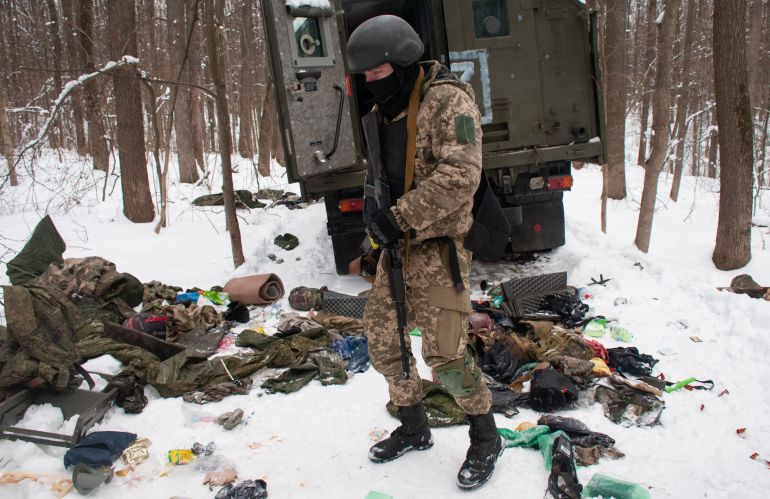
Politically, Ukrainian President Volodymyr Zelenskyy has excelled at getting his message across, inspiring resistance and sustained effort. Russian President Vladimir Putin, by contrast, seems isolated and out of touch, his inner circle now hammered by unprecedented sanctions.
The propaganda war has gone into full swing as social media is inundated with the very real images of suffering and stoic preparation and training by a civilian population determined to fight. Very few images are shown of regular Ukrainian military units. However, it is not enthusiastic civilians destroying columns of Russian armour but Ukraine’s armed forces that are doing the bulk of the damage to Russia. Little is coming out from the Russian side that is not a defence ministry handout.
Yet, despite Ukraine’s valiant efforts the Russians slowly advance. The capital, Kyiv, is being approached from two sides, Ukraine’s major cities are being contested, with Kherson in the south under Russian control.
The race is now on to pressure Russia to stop the conflict. The outside world is using severe sanctions and large arms transfers, and the Ukrainians themselves are attempting to inflict losses on a scale that will be unacceptable to Russia.
Even if Russia was to somehow win this war, the ensuing insurgency would ensure a constant stream of body bags back to the small towns and villages that still form Putin’s power base, further eroding any legitimacy he has left.